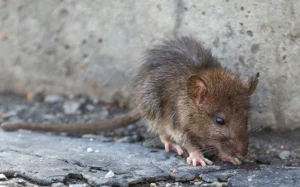
Rats are a common nuisance in many homes, and Dallas is no exception. If you're a homeowner in Dallas and have been dealing with rat problems, it's important to understand the different rat species that are found in the area. By knowing which species are likely to invade your home, you can better identify them and take appropriate action to prevent infestations. In this comprehensive guide, we will discuss the common rat species found in Dallas, their destructive nature, health risks associated with infestations, and effective strategies for dealing with them.
Dallas is home to several rat species, but three of the most commonly encountered ones are the Norway rat, Roof rat, and House mouse. These rodents are known for their ability to adapt to various environments, making them successful in urban settings like residential homes.
It's important to be able to identify the specific rat species in your area to effectively deal with them. Norway rats are typically brown in color, have a stocky build, and can grow up to 16 inches long, including their tail. They have a blunt nose, small eyes, and small ears. These rats are excellent swimmers and are often found near water sources such as sewers, rivers, and lakes. They are also skilled climbers and can easily scale walls and fences.

Roof rats, on the other hand, have a sleeker appearance compared to Norway rats. They are black or dark brown in color and are about 6 to 8 inches long without their tails. Roof rats have a pointed nose, large eyes, and large ears. They are excellent climbers and are often found in attics, trees, and on rooftops. These rats are agile and can jump up to 4 feet vertically and 8 feet horizontally.
House mice are much smaller than both Norway and Roof rats. They are usually gray or brown in color and have a slender body with large ears. House mice are about 2.5 to 4 inches long, excluding their tails. They have a pointed nose, small eyes, and large ears. These mice are excellent climbers and can fit through small openings as they can squeeze their bodies through holes as small as a dime. They are often found in homes, warehouses, and other structures.
Each rat species has its own unique behavior patterns. Norway rats, for example, are burrowers and create extensive tunnel systems underground. They are primarily nocturnal and are most active during the night. These rats are omnivorous and will eat almost anything, including grains, fruits, vegetables, and even meat. They are known to be cautious and may take some time to approach new food sources.
Roof rats, on the other hand, are agile climbers and are often found in elevated areas such as trees and rooftops. They are also nocturnal and are most active during the night. Roof rats are omnivorous as well and have a preference for fruits, vegetables, nuts, and grains. They are known to be curious and may explore new objects or food sources more quickly compared to Norway rats.
House mice, being smaller in size, are excellent climbers and can easily navigate through narrow spaces. They are primarily nocturnal but can also be active during the day. House mice are opportunistic feeders and will consume a wide variety of food, including grains, seeds, fruits, and even insects. They are known to be curious and may investigate new objects or food sources cautiously before fully committing.
To prevent rat infestations, it's important to take proactive measures. This includes sealing any cracks or openings in your home's foundation, walls, and roof to prevent rats from entering. Keeping your home clean and free of food debris will also discourage rats from taking up residence. Regularly inspecting your property for signs of rat activity, such as droppings or gnaw marks, can help you detect an infestation early on.
In addition, storing food in airtight containers and properly disposing of garbage will make your home less attractive to rats. Removing potential nesting sites, such as piles of debris or overgrown vegetation, can also help deter rats from settling in your area. If you suspect a rat infestation, it's best to contact a professional pest control service to safely and effectively eliminate the problem.

Rats are not just a nuisance; they can cause significant damage to your property. From chewing on electrical wires to gnawing on wooden structures, rats can wreak havoc on your home if left unchecked.
The Damage Rats Can Cause to Your Property
Rats' incessant gnawing habits can lead to electrical shorts, which may result in a fire hazard. Additionally, they can cause structural damage by burrowing into walls and attics, compromising the integrity of your home. Rats are also known for contaminating food and spreading diseases through their droppings, posing further health risks.
One of the most concerning aspects of rat infestations is their ability to chew through electrical wires. Rats have a constant need to gnaw on objects to keep their teeth from growing too long. Unfortunately, this means that they often target electrical wires, which can have disastrous consequences. When rats chew through the protective insulation of electrical wires, it can lead to exposed wires and electrical shorts. This poses a significant fire hazard, as the exposed wires can spark and ignite nearby flammable materials.
In addition to the fire hazard, rats can also cause extensive structural damage to your home. These rodents are skilled burrowers and can easily make their way into walls, attics, and crawl spaces. As they create their nests and travel through these spaces, they often chew on wooden structures, insulation, and other building materials. Over time, this can weaken the structural integrity of your home, leading to costly repairs and potential safety hazards.
Furthermore, rats are notorious for contaminating food and spreading diseases. Their droppings, urine, and saliva can carry harmful bacteria and viruses, including salmonella, hantavirus, and leptospirosis. When rats infest your home, they can easily access your pantry, contaminating your food with their waste. Consuming contaminated food can lead to serious health issues, especially for individuals with weakened immune systems.
It is important to address rat infestations promptly to prevent further damage and health risks. Implementing effective pest control measures, such as sealing entry points, setting traps, and maintaining cleanliness, can help deter rats from your property. Seeking professional assistance from pest control experts is often recommended to ensure thorough eradication and prevention of future infestations.

Rat infestations can have serious health implications for homeowners. These rodents are carriers of various diseases, some of which can be transmitted to humans through direct contact or contaminated food and water sources.
Diseases Transmitted by Rats and Their Impact on Human Health
One of the most notorious diseases associated with rats is leptospirosis, which can cause symptoms ranging from mild flu-like symptoms to severe organ damage. Rat-bite fever, hantavirus, and salmonellosis are other diseases that can be contracted through contact with rats or their droppings.
Leptospirosis is a bacterial infection caused by the Leptospira bacteria, which is commonly found in rat urine. When rats infest a home, they leave behind droppings and urine that can contaminate surfaces and objects. If humans come into contact with these contaminated surfaces or accidentally ingest food or water that has been contaminated by rat urine, they can become infected with leptospirosis.
The symptoms of leptospirosis can vary widely, ranging from mild to severe. In its early stages, the disease may present with flu-like symptoms such as fever, headache, muscle aches, and fatigue. However, if left untreated, leptospirosis can progress and cause more severe symptoms, including liver and kidney damage, respiratory distress, and even death in some cases.
Rat-bite fever is another disease that can be transmitted to humans through contact with rats. This bacterial infection is typically caused by the bite or scratch of an infected rat. The symptoms of rat-bite fever can include fever, chills, headache, muscle and joint pain, vomiting, and rash. If left untreated, the infection can spread to the bloodstream and cause more serious complications.
Hantavirus is a viral infection that is primarily transmitted to humans through contact with the droppings, urine, or saliva of infected rodents, including rats. When rats infest a home, they leave behind droppings that can become dry and crumble, releasing the hantavirus into the air. If humans inhale the virus, they can develop hantavirus pulmonary syndrome, a severe respiratory illness. Symptoms of hantavirus pulmonary syndrome include fever, muscle aches, cough, and shortness of breath. In some cases, the infection can be fatal.
Salmonellosis is a bacterial infection caused by the Salmonella bacteria, which can be found in the feces of infected rats. If rats contaminate food or water sources with their droppings, humans who consume these contaminated items can become infected with salmonellosis. The symptoms of salmonellosis include diarrhea, fever, and abdominal cramps. While most people recover without treatment, severe cases may require medical intervention.
It is important for homeowners to take rat infestations seriously and take appropriate measures to eliminate these pests from their homes. By doing so, they can reduce the risk of contracting these diseases and protect the health and well-being of themselves and their families.
If you find yourself faced with a rat problem, it's important to take immediate action to prevent further damage and protect your health.
Steps to Take When Facing a Rat Problem
Hiring Professional Pest Control Services for Rat Infestations
If your rat problem persists or if you prefer to leave it in the hands of professionals, contacting a pest control service that specializes in rat removal is a wise decision. Experienced professionals can assess the situation, implement effective control measures, and provide ongoing monitoring to ensure the complete elimination of rats from your home.
In conclusion, rat infestations are an unfortunate reality for many homeowners in Dallas. By understanding the common rat species found in the area, their destructive nature, health risks associated with infestations, and effective strategies for dealing with them, you can take the necessary steps to protect your property and safeguard your health. Remember to be proactive in preventing rat infestations and seek professional assistance when needed.